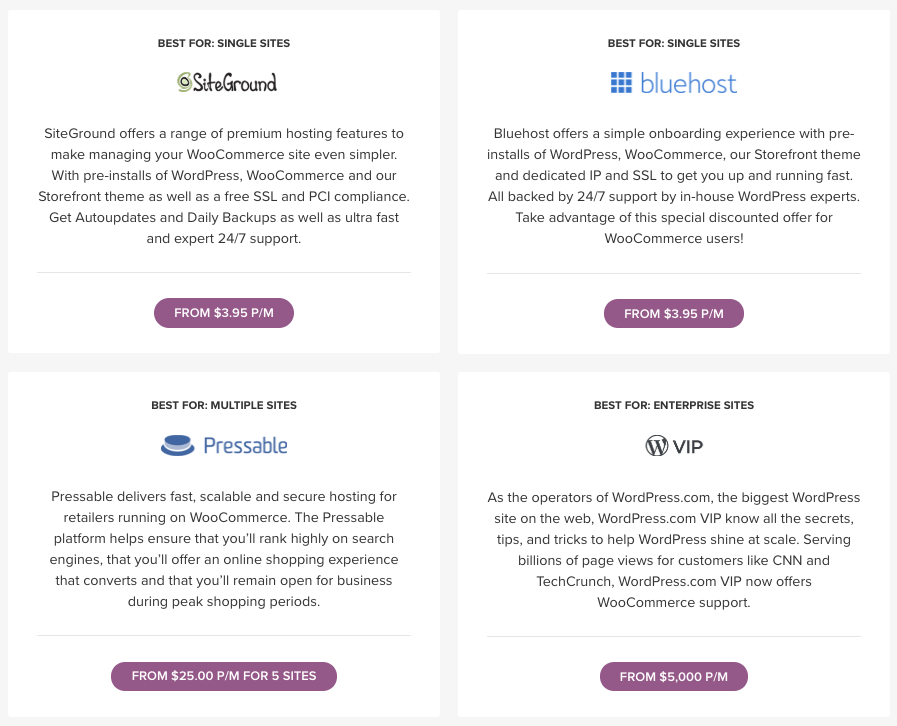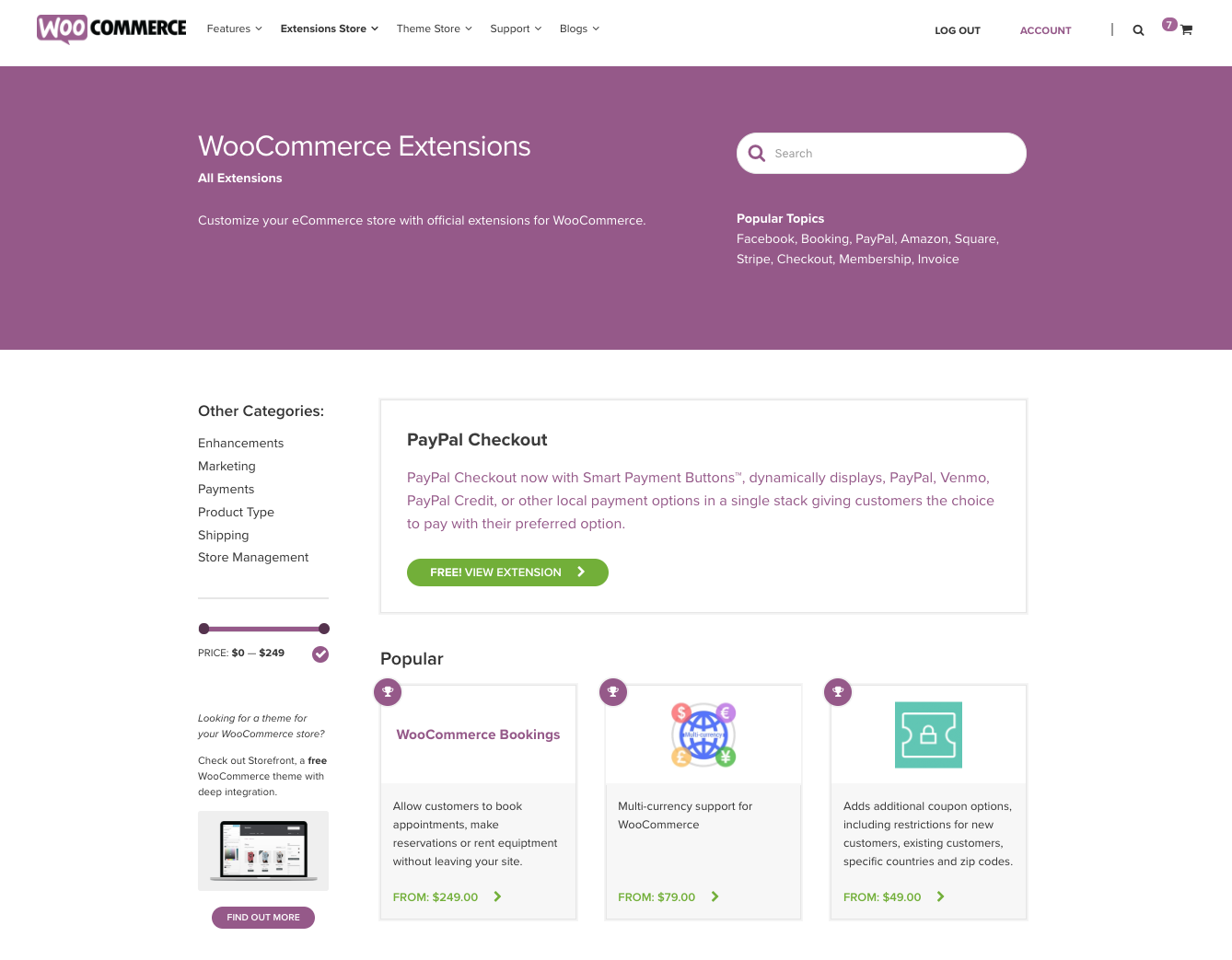How Much The Charge For App Hosting On App Store
WooCommerce and WordPress are both free, open-source software. While this can represent considerable savings, when it comes to WooCommerce pricing, there are still some costs involved in launching a new store.
One of the reasons many people choose WooCommerce is because, like the software itself, costs are customizable — you have a lot more control over what you spend and when than with most other eCommerce platforms.
WooCommerce setup costs: hosting and domain fees
WooCommerce is a plugin, so you'll need a WordPress site that can use plugins. The very first thing you'll need to do is choose is a host for your store and buy a plan.
This is actually quite easy. WooCommerce and WordPress both recommend hosts like SiteGround , Bluehost , and Pressable . These hosts are great to start with, although if you're migrating an eCommerce store, or will be running a large site, work with a host with specific WooCommerce expertise. WordPress.com also offers a Business plan , which allows sites to upload plugins.
Consider the following when choosing a host:
- How many sites are on your server? If using a shared hosting plan, resources are distributed between all of the other websites on the same server. Too many sites can slow things down, especially during peak times.
- Is there good customer service? If you ever have problems, are there customer service reps that are available 24/7 to help? Consider available support methods (phone call, live chat, forums, etc.) and whether they charge an additional support fee.
- What security features are provided? Look for automatic backups, malware prevention, and email spam filters.
- What is the server uptime? Uptime is the percentage of time servers (and your website!) are up and running. You want as high a percentage as possible.
- How does the host perform on speed? A fast site starts with your host. Read customer reviews to learn from their experiences and keep an eye out for SSD servers and high-level resource allocation (like RAM and CPU).
- Can you easily scale? As your site grows, make sure that you can upgrade your hosting plan without needing to migrate.
Read more about WooCommerce hosting options and the performance measures you should expect.
With WooCommerce, you have a lot more control over what you spend, and when you invest it, than with most other eCommerce platforms.
Hosting can be as little as $3.95 per month and as high as $5,000. Most hosts offer an initial free or low-cost period, with discounts when you buy hosting services for two or more years.

The next cost is registering a domain, or site name. Like hosting, domain registration often comes at an inexpensive introductory price that rises over time, with discounts when you buy multiple years of service. Expect to pay about $15 per year for each domain name you use.
Many hosts offer free domain searches, so you can find out early on if the name you like is available, has been taken, or is for sale. You can purchase a domain name from your host, or from domain registrars like Godaddy .
Hosting costs : $120 per year (average)
Domain registration: $15 on average, but could be much more expensive if purchasing a domain from a private seller
eCommerce and WooCommerce themes: to pay or not to pay?
Now we're getting into optional costs. The first one you'll face will be your eCommerce website theme.
If you've used WordPress in the past, you know there are thousands of free themes, many of which have been optimized for WooCommerce.
Many new eCommerce businesses start out with WooCommerce's official Storefront theme, which is both well-designed and simple. There are a variety of available child themes specifically designed for a variety of industries, and you can modify almost anything directly from the WordPress Customizer. If you run into trouble, WooCommerce provides excellent support. There are also numerous WordPress meetups and WordCamps where you can connect with experts who have volunteered to help solve problems.

Storefront is an intuitive and flexible, free WordPress theme offering deep integration with WooCommerce.
If you're leaning towards a free theme, choose one that is well-maintained and created by a developer with WooCommerce experience (e.g. has been updated recently and is compatible with the latest version of WooCommerce).
There are, of course, good reasons to buy a theme from a WooCommerce developer instead of using a free one:
- Free themes tend to look similar, so your site won't stand out as much.
- Free themes have limited functions.
- Paid themes provide customer service; at best, free ones offer a Q&A board.
- Paid themes are regularly updated.
Paid WordPress and WooCommerce themes cost anywhere from $20 to $100 per year.
Theme cost : $0 – 100 per year
Store management costs
There are some essential functions that come with managing an online store, like shipping and payment gateways, each of which involve their own expenses.
Shipping
Out of the box, WooCommerce provides options for flat rate shipping, free shipping, or local pickup. For many small businesses, these are the only choices needed.
The WooCommerce Shipping extension is a free option that connects to USPS and allows you to print shipping labels right from your WordPress dashboard and save money at the same time.
If you do need more advanced choices, choose between shipping extensions like Table Rate Shipping ($99), ShipStation Integration (starting at $9/month), and Distance Rate Shipping ($79). See a full list of available shipping extensions .
Payment gateways
Payment gateways allow you to safely and securely accept payments online. Each one varies in cost and structure and WooCommerce integrates with all the major options.
The best option is to use WooCommerce Payments, which allows you to manage payments directly in your WooCommerce Dashboard.
WooCommerce Payments has no setup charge and no monthly fees. You pay 2.9% + $0.30 for each transaction made with U.S.-issued credit or debit cards. For cards issued outside the U.S., there's an additional 1% fee.
Eligible merchants can also benefit from Instant Deposits using WooCommerce Payments. Instead of waiting the standard two-day period to access your funds, you can request an instant deposit and receive the money within 30 minutes – including nights, weekends, and holidays.
For more information, see our FAQ on deposit schedules.
Another choice is to use Paypal. With a basic Paypal account, you won't need to pay a monthly fee, but will pay 2.9% + 0.30 cents per sale to Paypal. This will direct your customers to Paypal's site, where they can pay with their account or credit card.
If you want to accept credit card payments directly on your site, you can upgrade to Paypal Pro , which costs an additional $30.00 per month. Other options include Stripe (2.9% and 0.30 cents per transaction with no additional fees) and Authorize.net (2.9% and 0.30 cents per transaction + $25/month.) View all payment gateway options .
Shipping costs : $0 – $108 per year on average
Payment gateway costs: 2.9% + .30 cents per sale plus a monthly fee of $0 – $30 per month on average
WooCommerce running costs: communications, SEO, and security
WooCommerce itself offers a lot of free tools — many borrowed from WordPress and adapted for WooCommerce. Extensions act like plugins for WooCommerce, allowing you to add functionality to your checkout, payment gateways, shipping, and more. Here's a list of ten free extensions directly from WooCommerce. 
There are two services I can't imagine overlooking for an eCommerce store:
- Customer communications. With email marketing, reach out to customers to encourage repeat purchases, recover abandoned carts, or thank them for orders. WooCommerce integrates with a variety of email marketing tools, like MailChimp , which offers both free and paid plans (starting at $9.99 a month), and Jilt, which starts at $29 a month. With seamless WooCommerce integration, you can sync customers and products, encourage upsells, and track everything from email opens to conversions. View all available email marketing extensions for WooCommerce.
- Search engine optimization (SEO) tools like Yoast and All In One SEO provide suggestions and functionality to improve your site's search engine rankings. Both offer free options, with paid plan upgrades.
It's always advisable to strengthen site security just in case . The vast majority of hosts are very security-conscious, but there's no harm in adding an extra layer. Services to check out include Sucuri and SiteLock . Sucuri costs $25/month (but bills annually; you'll be charged $300). SiteLock has different plans but doesn't publish them, so you'll have to contact them for details. They offer a free security tool to Bluehost customers, and will heavily discount upgrades as well.
Bluehost also recommends Jetpack , which offers a free plan with basic security functions , like brute force attack prevention and automatic updates. Its paid services includes additional security — automated malware scanning and security fixes, as well as daily or real-time backups . Jetpack's Premium package costs $99/year and includes many other website tools that help with everything from performance and design to marketing and management.
It's also important to factor an SSL certificate into the costs of running an eCommerce site. SSL certificates encrypt sensitive information, like credit card data, between a customer's browser and your server. It's critical for online stores and, in most cases, is provided for free by your host. If your host doesn't provide a free option, the cost varies between $8/year to $65/year.
Communications : free to $348 per year
SEO : free to $79 per year
Security : free to $300 per year
SSL certificate: typically free but could cost up to $65 per year
Additional spending: customer experience enhancement
If your budget allows you to do more with your website, the next area of focus should be enhancements that boost the customer experience and drive conversions . No matter your needs, WooCommerce offers both free extensions and paid solutions.
- Add product page features . Offer add-ons like gift wrapping, set up a waitlist, or let customers name their own price.
- Enhance the checkout page . Add last-minute upsells, edit checkout fields, or allow shoppers to log in using social media.
- Make your store your own . Create beautiful pop-ups, showcase products in a slideshow, or turn your store into an online catalog.
- Customize navigation and search . Add advanced filters, create table views, or assign brands to each product.
- Market your products . Connect with social media, set up Google shopping ads, or follow up with customers.
It's possible to 'overdo it' with WooCommerce by adding too many bells and whistles. Using too many unnecessary extensions might slow down your website ; even the smallest of delays could cost you a sale.
Ultimately, the amount you spend on your WooCommerce site is up to you! You have full control over budgeting and prioritizing the needs of your website and business.
What about hiring a developer?
You may be able to hire developers at an hourly rate to assist with elements of your site that are outside of your expertise. Developers' fees will range dramatically from $10 to $100+ per hour. Or, you can hire a developer to design and build your entire site from scratch. This can also vary, but might cost anywhere from $1,000 to $15,000.
WooCommerce provides a list of hand-selected, high-quality experts . They know both WordPress and WooCommerce extremely well and can get you up and running efficiently.
Customize your store; customize your budget
The ability to customize WooCommerce doesn't just mean creating a unique look and functionality — that customization includes the costs associated with developing and running a store. If you're on a really tight budget, it's possible to create a fully-functioning store for the cost of a domain name and hosting plan (as low as $135 per year). Well-funded or established stores could spend thousands or more.
With some customization, most store owners can probably get started for around $1,000.
We'd love to hear from you in the comments how you set up your store.
We're nearly at the end of this introductory series — tomorrow we cover how to set up a new WooCommerce store as the final piece.
li{margin-bottom:1em;}

How Much The Charge For App Hosting On App Store
Source: https://woocommerce.com/posts/woocommerce-pricing/
Posted by: huttonandless00.blogspot.com



0 Response to "How Much The Charge For App Hosting On App Store"
Post a Comment